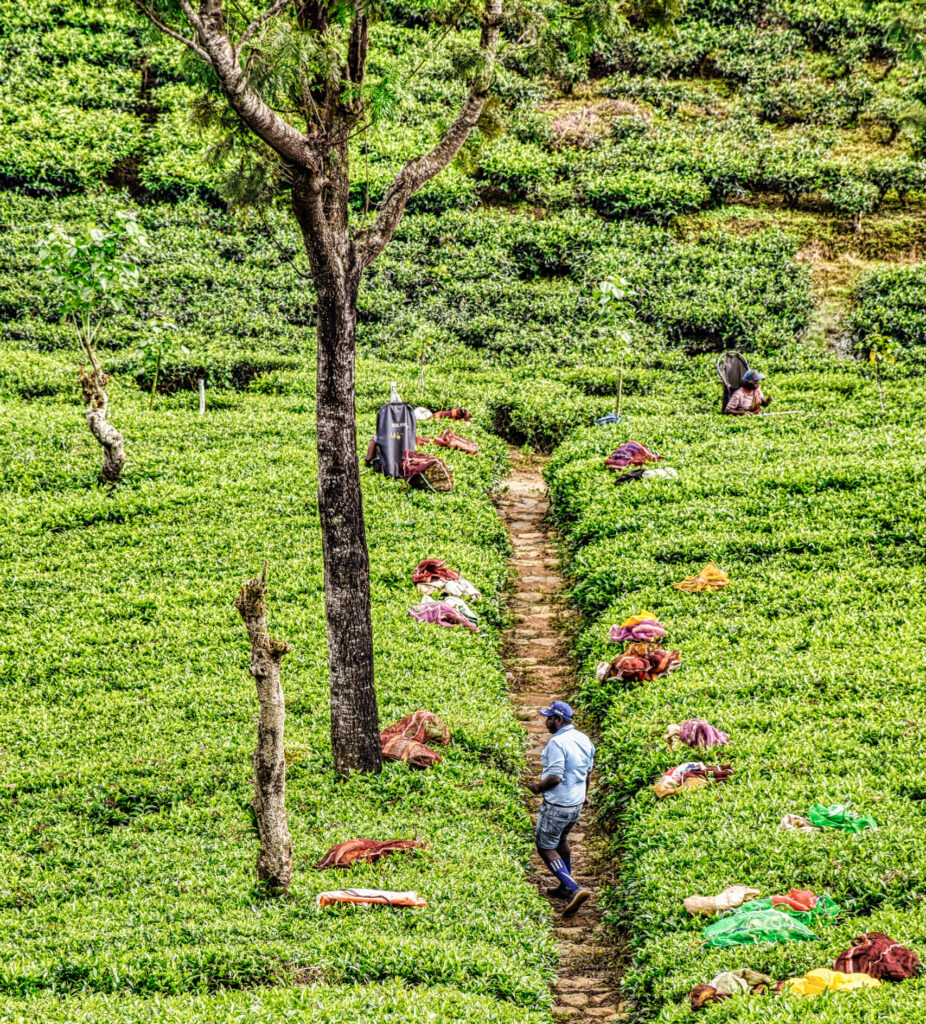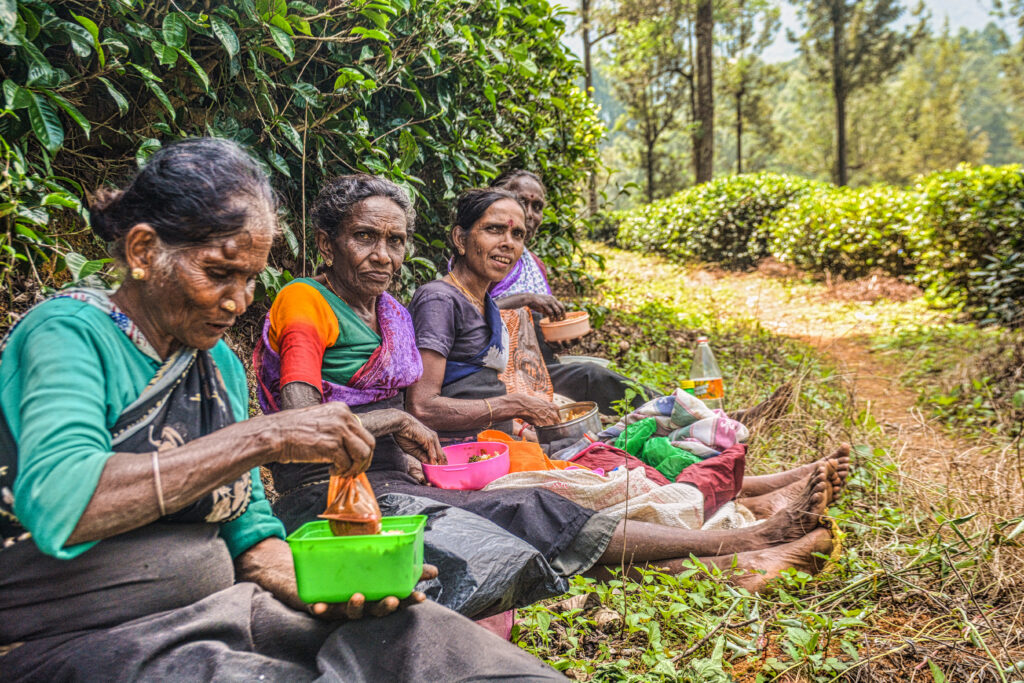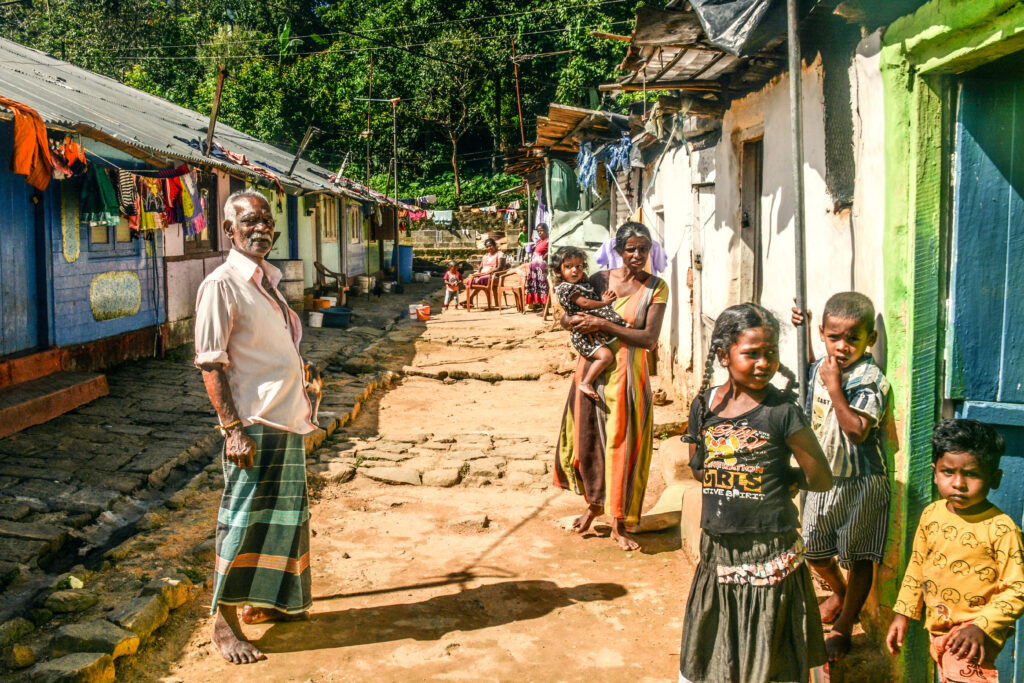The photographic exhibition called “Thé Kahata”
The “Thé Kahata” exhibition was organised to bring home a message to the world: That things have not changed for over 200 years in the lives of the plantation community. Not in their infrastructures, not in their dwelling places. This photographic exhibition held at the Lionel Went Theater, Colombo 07, highlighted the inaccuracies of the conclusion that the politicians have come to that living conditions of the people in the plantations have been completely transformed through housing schemes.
“Thé Kahata” is a national level photographic exhibition featuring a selected collection of photographs captured by young people living in the Badulla and Nuwara Eliya districts in Sri Lanka. This exhibition was an open attempt to understand the richness of the plantations through the lenses of the young photographers. They themselves represented the community and were given the novel opportunity to narrate the hopes and aspirations of their people through the work of their captures. The exhibition drew criticism on certain social media platforms saying that it only exposed the dark side of the plantations and had deliberately covered up and ignored the development projects. The organisers maintain that while they are open to criticism it should be constructive criticism to be effective.
Two young photographers who had contributed photographs to the photo exhibition received an opportunity to work in the studios of Dominic Sansoni, the renowned Sri Lankan photographer. Many of the other photographers have been invited by various media institutions in the island to work with them.
The photographs on exhibition epitomise the entrenched hardships and struggles of plantation workers today. Smiling faces of little children living in the plantations take our minds back to a place bearable once again, after the onslaught of photographs of life in congested “line” rooms with very little space, the weight of the baskets on bent heads as they struggle through the difficult terrain to weigh the tea leaves and a life devoid of the most basic amenities of life.
Cooking in a small nook where the toilet and kitchen are adjacent to each other, parents trudging saddled with baskets of plucked tea leaves, as the children walk to school, women taking a sip of tea from discarded bottles of liquor with the liquor label sitting on a rock and taking their meagre meals in discomfort are all photographs that merely depict the ordinary day-to-day events in lives of the community.
The photographs also indirectly illustrate that it is the plantation workers who have paved the way for the luxurious life for the trade unionists who live in luxury with millions acquired in membership fees…
In fact, the photographs only display a facet of the issues and challenges faced by the plantation workers. There are deeper issues that cannot be explained further and these will need to be highlighted through the camera lens as well in the future.
The identities of the society we represent in the dying world were explored and displayed as valuable. The forgotten arts of dance that are becoming extinct as culture and identity dilutes, were duly fixed as visuals.
It is important to have the struggles of the people in the plantation areas on display in a national art gallery such as this. The public and community life of the plantations can be easily understood through the photographs, which transcend beyond. The facial expressions of the people we see in the photographs communicate more powerfully than words.

There is an opinion that the problems of the people are taken up and highlighted by politicians. In fact, this goes further with artists, writers and even civil society activists highlighting them in their own respective mediums. Photography is also a medium and a language that civil society should make an effort to highlight. Former Member of Parliament Mylvaganam Thilakarajah, who was present at the event, said that he sees this as an exhibition of the ‘ignored people’.
After 18 months of training, the young photographers exhibited their first “Thé Kahata” photo exhibition in the year 2020 in Nuwara Eliya on August 23 and on August 29, September 14 and 15 in Badulla. They have captured through their lens incidents that are directly related to them in real life. Each of these photographs tells us a story and conveys a message to us, the photographers have been able to present the evidence of where we are, and how far behind the plantation community is placed in society. While this is the reality of the people in the plantation areas, we need to change the future of this narrative.
This immense responsibility falls on the shoulders of the wider society.
“This photo exhibition is the result of a year-long effort by us. We have taken these photographs to explain the livelihood of the people in the plantation areas.” A young photographer commented that out of 40,000 photographs taken by 40 photographers divided into two groups, only 100 high quality photographs were displayed at the exhibition.
For the past two years, photographers have worked hard to articulate the plight of the society they represent. “This is not just a random photograph; it is a seed that is planted in us in relation to the life of the people with the hope that those seeds will grow into a large tree in the future. There is a need for us to highlight the plight of the people. The reason we have not progressed is because of the reliance and dependency on politicians, from that day till now.”
The people of the plantation areas have been facing various problems for the last 200 years. The purpose of this exhibition was to make people understand the problems they face through photographs. Writers and artists, especially young people, living in Colombo have highlighted the problems of the plantation community from various angles. Our main objective is to make other communities living in this country aware of the problems we face and the real situation in this sector.
Displaying the housing schemes that have been implemented, will only fulfil the aspirations of politicians and if we had done so, they would have criticized us for doing a political campaign. The photographs provide us the visuals of the development work done or not done for the plantation sector in the last 200 years and what the estate companies have done. The communities are so backward that some people even question to what era the photographs belong. The people from the community who are now living in Colombo detaching themselves from the plantation sector are the ones who say that this sector is now developed. When we place these photographs before the plantation community, they are ready to take us to areas where the situation is even worse. This simply means that there are even darker realities in the plantations.
People who claim that the plantation sector has developed can learn lessons from this exhibition. It is not correct to measure development by considering only one area in the plantation sector as an example. Some people can only criticize. The coordinator of the exhibition says that despite the criticism, the efforts will continue.
Special mention is due for the support of the European Union and the German Federal Ministry of Foreign Affairs that co-financed the Strengthening Reconciliation Processes in Sri Lanka Programme, to Uva Shakti Foundation and the Centre for Policy Alternatives for this exhibition which was held in Colombo on the 26th and 27th September 2020.
K. Prasanna
Journalist
 Previous post
Tears in your teacup
Previous post
Tears in your teacup
 Next post
Thé Kahata: What follows from love
Next post
Thé Kahata: What follows from love

